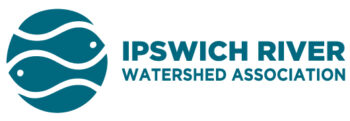We at IRWA feel like beavers could use a PR boost. We know that people get frustrated with beavers when they cut down trees that we’d prefer stay standing and flood open spaces and roadways. But beavers are an essential part of a functioning watershed. Here’s a few reasons we still love them despite their bad rap.
Beavers help us offset carbon emissions by creating wetlands. When beavers build dams, the water that backs up behind them creates or expands wetlands. Wetlands are an important habitat for native plants and animals and help improve biodiversity in our region. They are also an important carbon sink; a wetland captures and stores more than twice as much carbon than a forest of similar size. Wetlands also provide flood protection for downstream areas by storing stormwater.
Beavers help with groundwater recharge. Beaver dams serve to slow the flow of river water, thereby promoting groundwater recharge. Recharge is critical for the health of our region’s rivers. Our rivers are groundwater fed, meaning the water in the river between rain storms comes directly from groundwater stores. Groundwater recharge ensures there is water in the river during relatively dry periods. Plus the ground is very effective at cleaning water that flows through it. We at IRWA love it when water flows into and through the ground.
Beaver dams don’t block fish passage. If you are familiar with IRWA you probably know that we are working hard to address man-made dams that block critical fish passage for alewives and shad that spawn in our watershed. So, you might be asking, do beaver dams pose a similar problem for local fish? In short, no! For native fish that co-evolved with beaver dam activity in the systems, beaver dams are passable and not a problem. For many fish who pass upstream of beaver dams with ease, this tends to correspond with when they spawn and that migration is tied to higher flows.
Beavers are fascinating rodents! Who doesn’t love interesting native animals? Beavers, sometimes referred to as ecosystem engineers, are perfectly designed for this habitat. Beavers are North America’s largest native rodents, weighing between 35 and 80 pounds as adults. They can be 2–3 feet in length, with an additional 10–18 inches for the tail. Check out this post about some our summer program participants learn about what a nictitating membrane is and how beaver’s ear valves help them go underwater.
The return of beavers to our area in large numbers is a good sign. When European colonists arrived to Massachusetts, we had a significant beaver population. However, beaver populations in New England were decimated by fur trappers and they had essentially disappeared from Massachusetts by the late 1800’s. The return of beavers to our waterways demonstrates that our ecosystem is healthy enough to provide an enticing habitat for them. We take that as a good sign of progress in our watershed restoration work!
Did you know in 1996 Massachusetts banned beaver trapping? Reading about the surprising implications in this brief from the Association of Fish & Wildlife Agencies.
Want even more info on beavers? Check out the Beaver Institute, NOAA’s handy Beaver guide, or read about how IRWA and MA Division of Marine Fisheries relocated one living in a decommissioned fish ladder here.
Baby Beaver photo courtesy of Point Defiance Zoo & Aquarium

